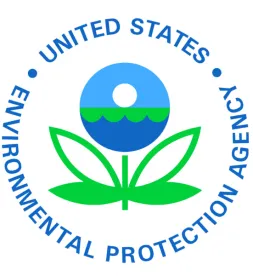On July 1, 2016, the US Environmental Protection Agency (EPA) issued an interim final rule that modifies statutory civil monetary penalty amounts for statutes administered by the agency. EPA’s interim final rule, which becomes effective on August 1, 2016, implements requirements of the Federal Civil Penalties Inflation Adjustment Act Improvements Act of 2015 (the 2015 Act) and, according to EPA, is designed to increase EPA’s statutory civil monetary penalties to reflect inflation – significantly, in some cases – and to ensure civil penalties maintain their deterrent effects. EPA has stated that its adjusted civil penalty amounts will not necessarily affect the process it uses to assess penalties or the amounts it will ultimately assess, but EPA’s adjusted statutory penalty amounts could result in significant penalties in some enforcement cases. In some cases, EPA now has authority to impose penalties of hundreds of thousands of dollars per day per violation.
Since 1990, the EPA, like other federal agencies, has been required to review and, as appropriate, to revise its statutory monetary penalty amounts every four years to account for inflation. In practice, however, certain agencies did not follow this quadrennial requirement. The 2015 Act provides that, beginning on January 15, 2017, federal agencies, including the EPA, will be required to provide for annual cost-of-living adjustments to their statutory penalty amounts to reflect inflation.
In the interim, however, the 2015 Act requires agencies to provide for initial “catch-up” cost-of-living adjustments for civil penalty amounts through their interim final rulemakings. The “catch-up” amounts may not, by statute, exceed 150 percent of the penalty amounts in effect on November 2, 2015.
Consistent with the 2015 Act and the Office of Management and Budget’s (OMB) February 24, 2016 guidance, EPA calculated “catch-up” amounts for over 66 statutory penalties and announced the adjusted penalties in Table 2 of the interim final rule. EPA’s new, adjusted statutory civil penalty amounts vary by penalty. For example, the interim final rule increases the previous maximum $37,500 per-day penalty for violating requirements of implementation plans or permits for affected sources, major emitting facilities, or major stationary sources under the Clean Air Act (CAA) to a maximum of $93,750 per day per violation. Similarly, the interim final rule increases EPA’s civil monetary penalty under the Clean Water Act (CWA) for oil or hazardous substance discharges – previously set at a maximum of $37,500 per day per violation – to $44,539 per day per violation.
The ranges of statutory civil penalties under Table 2 of the interim final rule are, by statute:
|
EPA-Administered Statute |
Range of Statutory Civil Penalties for Violations that Occurred After November 2, 2015 and Assessed on or After August 1, 2016 |
|
Clean Air Act |
$8,908 – $356,312 |
|
Clean Water Act |
$1,782 – $257,848 |
|
Comprehensive Environmental Response, Compensation, and Liability Act |
$53,907 – $161,721 |
|
Resource Conservation and Recovery Act |
$14,023 – $93,750 |
|
Safe Drinking Water Act |
$9,375 – $1,311,850 |
|
Toxic Substances Control Act |
$8,908 – $37,500 |
EPA can assess its adjusted penalty amounts on or after August 1, 2016 for statutory violations that occurred after November 2, 2015; parties should consult Table 2 of the interim final rule for guidance on penalty amounts for such violations. However, for statutory violations that occurred on or before November 2, 2015, or for violations that occurred after November 2, 2015 but for which EPA assesses penalties before August 1, 2016, parties should continue to consult EPA’s existing civil penalty amounts, located in Table 1 of 40 C.F.R. § 19.4.





 />i
/>i

